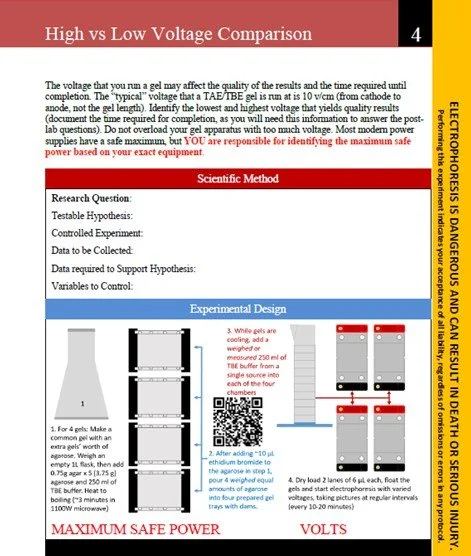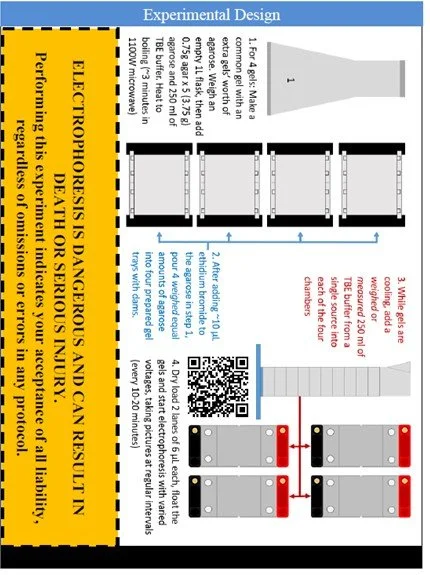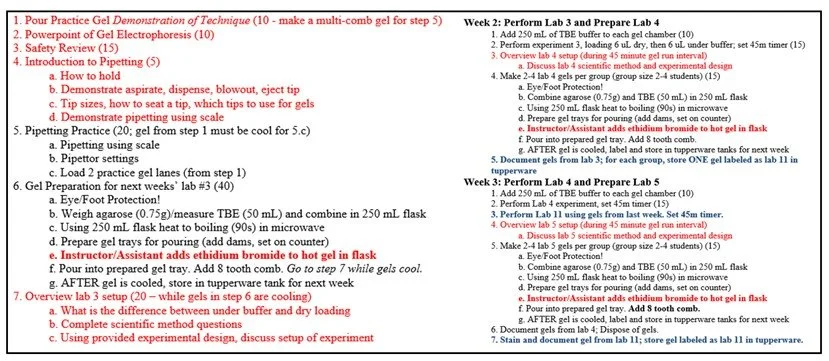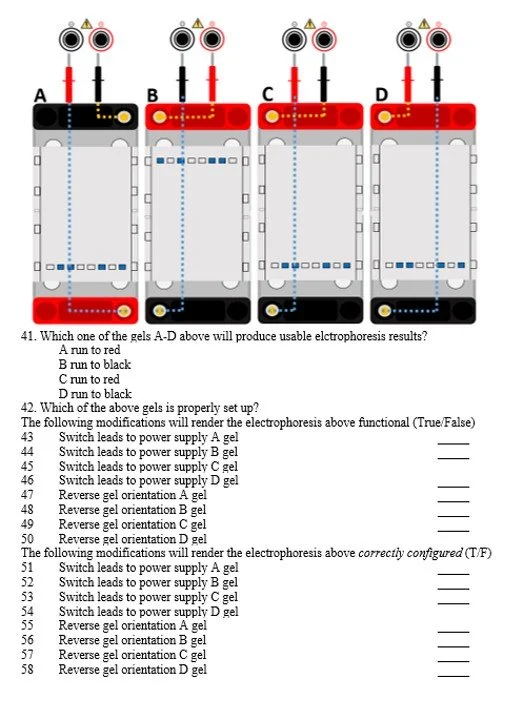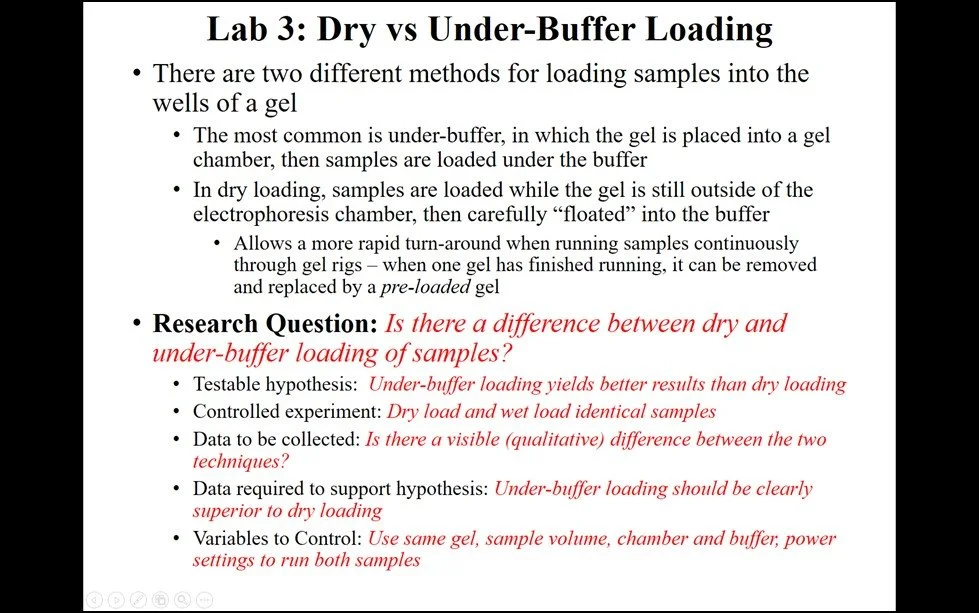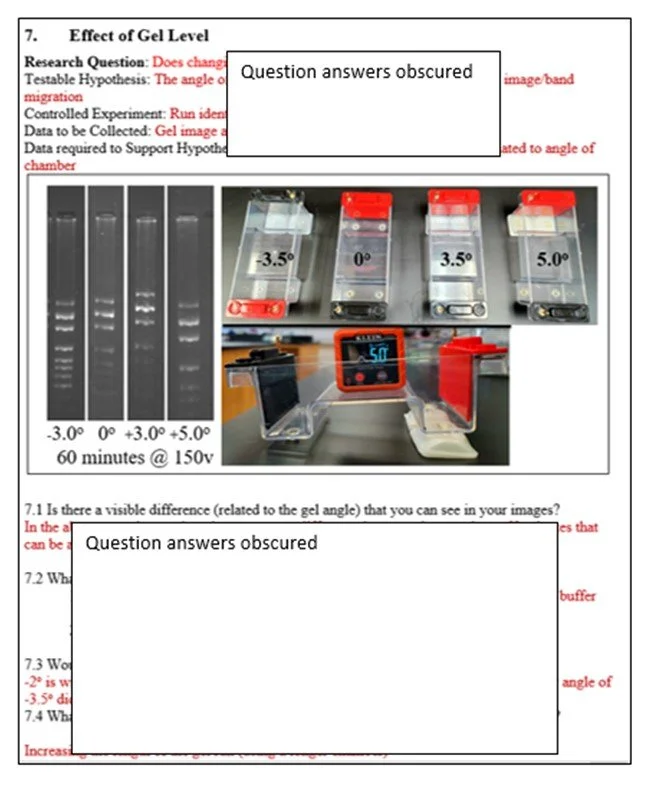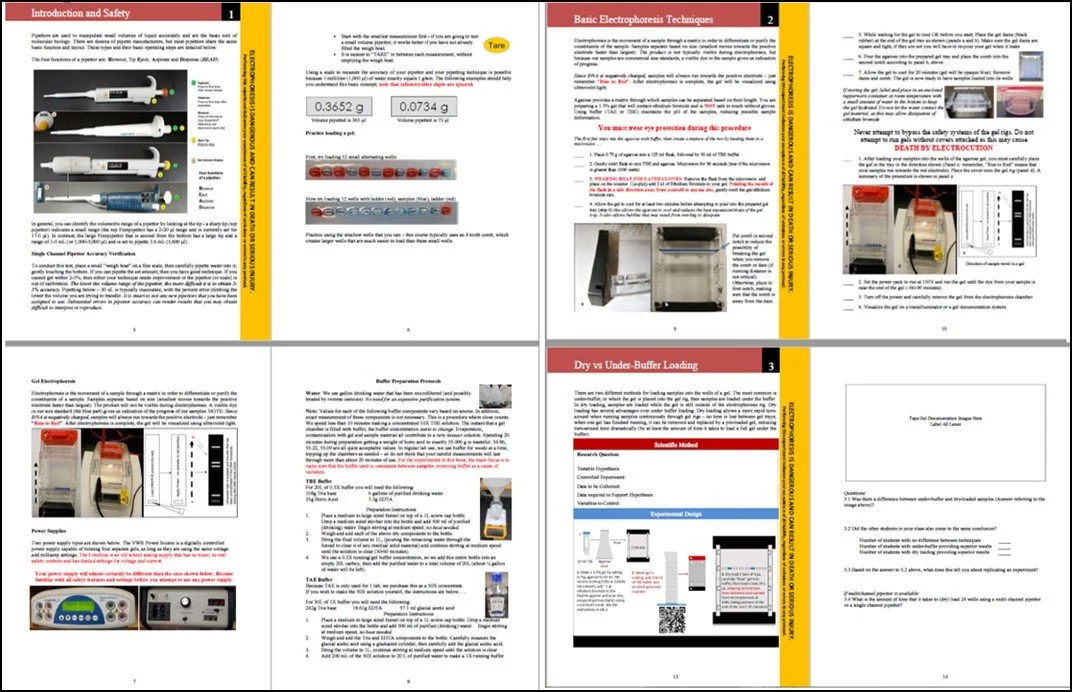Gel Electrophoresis Methods
Fourteen laboratory problems illustrate basic gel electrophoresis concepts and reinforce the scientific method. This material was designed as a technique-based course for a two or four year institution. In order to maximize reliability, all labs use an inexpensive commercial size-standard. This course has a low consumables cost per student, per term of less than $15.
Nine Core Labs/Topics include Introduction and Safety, Basic Electrophoresis Techniques, Dry vs Under Buffer Loading, High and Low Voltage Comparison, Volume of Buffer Comparison, Sample Volume vs Well Size, Effect of Gel Level, Effect of Debris or Pipetting Error, Effect of Angled/Slanted Comb.
Five Extended Labs include Gel Reuse via Re-melting, Gel Reuse via Sample Runoff, Variation in Gel Concentration, Variation in Buffer Concentration, Variation in Buffer Type.
Example of lab material, showing the scientific method section and experimental design with animation QR link. The left panel shows the standard print version, while the right panel shows the large print edition expansion of the experimental instructions onto a single page. Note that each experiment is flagged with a safety disclaimer (yellow box with black text).
The first three meeting schedules. Week 1 (left) includes an introduction to safety, pipetting and initial gel preparation, while weeks 2 and 3 (right) show the suggested order of each lab meeting. Red text indicates instructor-led activity, black text indicates student activity and blue text indicates multi-week lab activity. Parentheses indicate approximate time for each step. This information is provided to instructors in Microsoft Word format to allow modification.
Instructor Materials Sent by Request
test questions obscured
Instructors are provided with an assessment bank of 43 multiple choice, 18 gel wiring diagram, 15 true/false and 10 long answer questions. A pre-formatted 40 question exam is also included.
A total of 36 PowerPoint slides are available in a single file. These cover a simple overview of electrophoresis, electrophoresis components, two slides for each lab and test review slides.
Scientific Method and Post-lab answers are available. Many labs include example results (lab 7, gel level shown above). There are many answers that are NOT given, as these depend on the results generated during the experiment.
Because the textbook is listed on Amazon and may not be carried in a bookstore, the introduction and first lab are available to instructors, allowing course execution until books arrive.
About the Authors
Dr. Shultz has been working in the field of Genetics for over 20 years and is an Associate Professor of Genetics at Louisiana Tech University
Rawieh Telfah is a Molecular Science and Nano-technology Ph.D. student at Louisiana Tech University. She has extensive experience teaching labs for genetics, general biology and microbiology.
Katie Patrick is a certified, licensed Medical Laboratory Scientist, Assistant Professor and Clinical Coordinator for the Medical Laboratory Science program at Louisiana Tech University.


